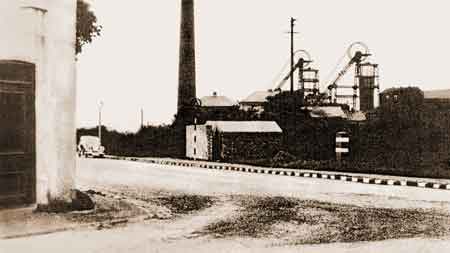Faced with the collapse of the shaft at their Bredbury colliery, J. & R. Stott-Milne chose a new site 950 metres to the west. Sinking began in 1889 and on May 27th 1892 the Manchester Times reported that the sinkers had “reached a good coal seam five feet thick”. During sinking, the Red Sandstone had given off a large quantity of water, which was held back by about 73 metres of cast iron lining, or tubbing, in each pit. The pit was said to be “not now producing enough water to feed the steam boilers”. The 349 metre deep shafts eventually worked the Roger or Hard Mine, and the Four Feet, Five Feet, Town Lane and Yard Mines.
J. & R. Stott-Milne worked Lingard Lane until May 1899 when, as noted under Bents Lane, they were declared bankrupt. By 1900 they had been replaced by the Bredbury Colliery Co. Ltd, which employed an average of 212 men underground and 30 on the surface between 1905 and 1925. They closed Lingard Lane during the National Coal Strike of 1926 and it never recovered. For example, in 1930 and 1935 there were 35 and 10 working underground, and 23 and 13 on the surface, respectively. Things were not going well, and by 1935 Lt-Col. W. Chaloner, J.P. had been appointed as Receiver. In 1938 only two men were underground, and none in 1940. Those employed on the surface fell from nine to two. Lingard Lane was officially abandoned in April 1939.
Sources:
- NMRS Records, Gazetteer of British Collieries
- Bredbury Pits (May 2015)
- Manchester Times, May 27th 1892


